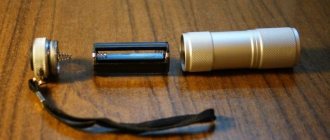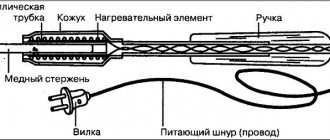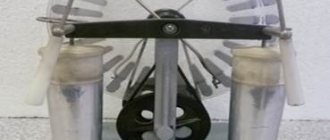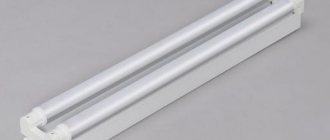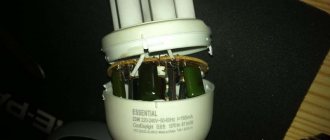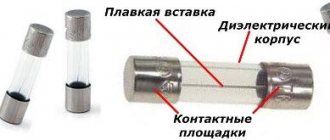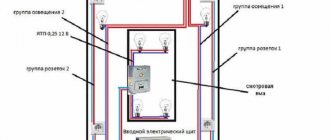What is a UV lamp?
For the growth, cultivation and prosperity of green spaces, an additional light source is needed - an ultraviolet lamp for plants. Such a device for home use is also called a phytolamp or a lamp for greenery. It has a great effect on the life of plants and is quite easy to use. Such a device is suitable for almost all types and types of indoor flora, providing the right amount of light for their life.
Phytolamp is a lighting device with ultraviolet glow, intended for use in enclosed spaces to create an optimal light regime. You can buy it, or you can make it yourself. The artificial “sun” will provoke the processes of photosynthesis, the plant will release energy and oxygen as if it were growing under the real sun. Not all types of plants require an auxiliary UV light source, but only those that require long daylight hours. As a rule, this is a tropical flora. The desire to minimize energy costs led to the invention of UV lamps.
Selecting a light source
Modern production of lighting equipment provides the buyer with a wide choice when purchasing, which often leads to confusion and makes one think about the most profitable option.
Learn more about maintaining the temperature and water hardness in the aquarium, as well as the importance and selection of necessary items for the aquarium: heater, filter, and background.
Comparing types of lamps will help you make the right choice when purchasing:
- incandescent lamp - a popular type, although ultraviolet lamps of this type are extremely rare. Its advantages are high availability and low cost. The disadvantages include: a small number of operating hours (up to 1000 hours), high electricity consumption and the ability to generate heat;
- halogen - refers to incandescent lamps, but differs in the content of halogen vapors in the cylinder. Advantages: high light output, resistance to voltage surges. The disadvantages are: a small number of operating hours (up to 1500 hours), low-frequency noise when turned on;
- luminescent — mercury gas-discharge lamp with radiation based on fluorescence. Its advantages include economical energy consumption, high power, and operating time of more than 10,000 hours. The disadvantages are the high cost and high sensitivity to frequent switching on/off and voltage drops, which shorten its service life;
- LED — based on the use of LEDs as light sources. Its advantages are low cost, low power consumption, operating time of more than 50,000 hours. The disadvantage is the low power of light radiation.
The right choice will not only help in the manifestation of the properties of ultraviolet lighting, but will also reduce maintenance costs.
Important! Regardless of the period of use, the ultraviolet lamp must be replaced every year, since over time the irradiation intensity decreases significantly.
Ultraviolet lamp for home use: device and manufacture
If there is a sick person in the house, it is very uncomfortable. It’s even more unpleasant when the disease is viral, and you have to take some precautions when communicating, trying not to get infected. But, as it turned out, it is possible to find a way out of this situation that will suit everyone.
When visiting clinics or hospitals, many were faced with the fact that entry into the premises was prohibited due to quartzing. Many have seen the lamp itself for this process. But few people know what this so-called “quartz” is and why a person should not be under its rays. So why not understand this term.
The real name of such a lamp is ultraviolet, and the name “quartz” comes from the fact that the bulbs of such devices are made of quartz glass. But first things first. First you need to understand what types of UV devices there are.
Application areas of lamps
The bactericidal effect of the emitted spectrum is widely used in medicine for the prevention and treatment of a whole group of diseases.
Due to the popularity of private cosmetology services, as well as the need to comply with current rules of sanitary hygiene, lamps have become a well-known product on the medical market.
Possible areas of application of bactericidal lamps:
- Preventive air disinfection in medical institutions or private households.
- Purification of water resources.
- Local bactericidal lamps for cosmetic procedures.
- As part of complex treatment of infectious respiratory diseases (mobile units are used even at home).
Such devices are popular as a means of preventing rickets and hypovitaminosis D.
How to choose a quartz lamp for your home
To understand which UV lamp for home use is right for you, you need to understand how it will be used. If you need a bactericidal lamp for your home to disinfect the room, and it is possible to remove all household members from it for this time, including animals and favorite plants, you can plan to purchase an open lamp. Such devices kill microorganisms on all surfaces that ultraviolet radiation can reach; they are turned on to treat the room when there is a sick child or adult in the apartment (in the absence of people).
Devices that can safely operate indoors with people are open-type irradiators with a screen or recirculators. There are models whose purpose is to disinfect surfaces and confined spaces: shelves in cabinets, refrigerators, and so on. When choosing the power of equipment, it is important to know the volume of the room in which it will operate. The choice between wall-mounted, mobile or portable models depends on whether you intend to move the unit.
Attention should also be paid to the technical data of the device, the availability of a warranty, and the manufacturer’s brand. Before purchasing, read reviews of popular devices. If you buy a small device with attachments for quartzing ENT organs, you should know that if you remove all these tubes, you can quartz a small area of the apartment, no more than 3 square meters. This is enough to carry out local disinfection of the crib and bathroom, but not enough for the entire room.
How much does a bactericidal irradiator cost?
Prices for home “germ fighters” start at 1,200 rubles and reach 30,000 rubles (and sometimes even exceed it). These are only quartz generators, the cost of home solariums is not taken into account. It’s easy to choose a decent device for home use at a suitable price; the range is rich; popular models are from the Russian manufacturer that produces Solnyshko quartz units. The average price of a high-quality functional ultraviolet device from this company is 2100-2900 rubles.
Another famous one. Simple open type irradiators manufactured under this brand cost 1800 rubles, a recirculator is sold for 4500-4700 rubles, there are models with a timer. Another Russian company producing bactericidal devices is Elektronika. The average cost of its UV irradiator is 3,000 rubles. Devices of the more expensive Dezar class cost about 10,000 rubles.
Calculation of required power
To ensure all the properties of UV lighting, there are certain parameters for calculating the irradiation rate. Such parameters include the volume or area of lighting, power, transmission index, dimensions of devices and others. Accurate calculation of power is made using complex formulas, the solution of which requires knowledge of all quantities. Lack of information about such quantities can complicate the calculation process. The simplest method for determining the required power is to make application recommendations based on the intended use.
Did you know? It is impossible to absorb UV radiation indoors, because window glass, which contains iron oxide, does not transmit ultraviolet rays.
Due to the fact that reptiles need ultraviolet radiation throughout the day, its spectrum is important for these purposes:
- short wavelengths of light (UV-A) should be in the spectrum of 5% to 10% activity;
- longer wavelengths of light radiation (UV-B) must be in the spectrum of at least 30% of the activity.
Depending on the volume of the aquarium, it is recommended to use the following powers:
- volume 130-230 liters - 5 W;
- volume 150-280 liters - 7 W;
- volume 170-570 liters - 9 W;
- volume 230-680 liters - 11 W;
- volume 280-760 liters - 13 W;
- volume 340-830 liters - 18 W;
- volume 450-1100 liters - 24 W;
- volume 570-1350 liters - 36 W.
When determining the radiation dose, it is necessary to focus on the lower limit of the volume. For plants, the choice of lamp must meet the following criteria:
- power - from 18 to 36 W;
- length - from 60 to 120 cm;
- color rendering index - 7 -8% activity.
Did you know? Ultraviolet is in the spectrum invisible to the human eye. But people who have undergone surgery to remove a clouded lens (cataract) are able to see UV rays.
Determining these values is not difficult, since the indicators of such radiation are indicated on each package of ultraviolet lamps. Compliance with these characteristics is especially important, since the use of UV devices of this kind for plants is recommended for 15 hours of continuous operation.

